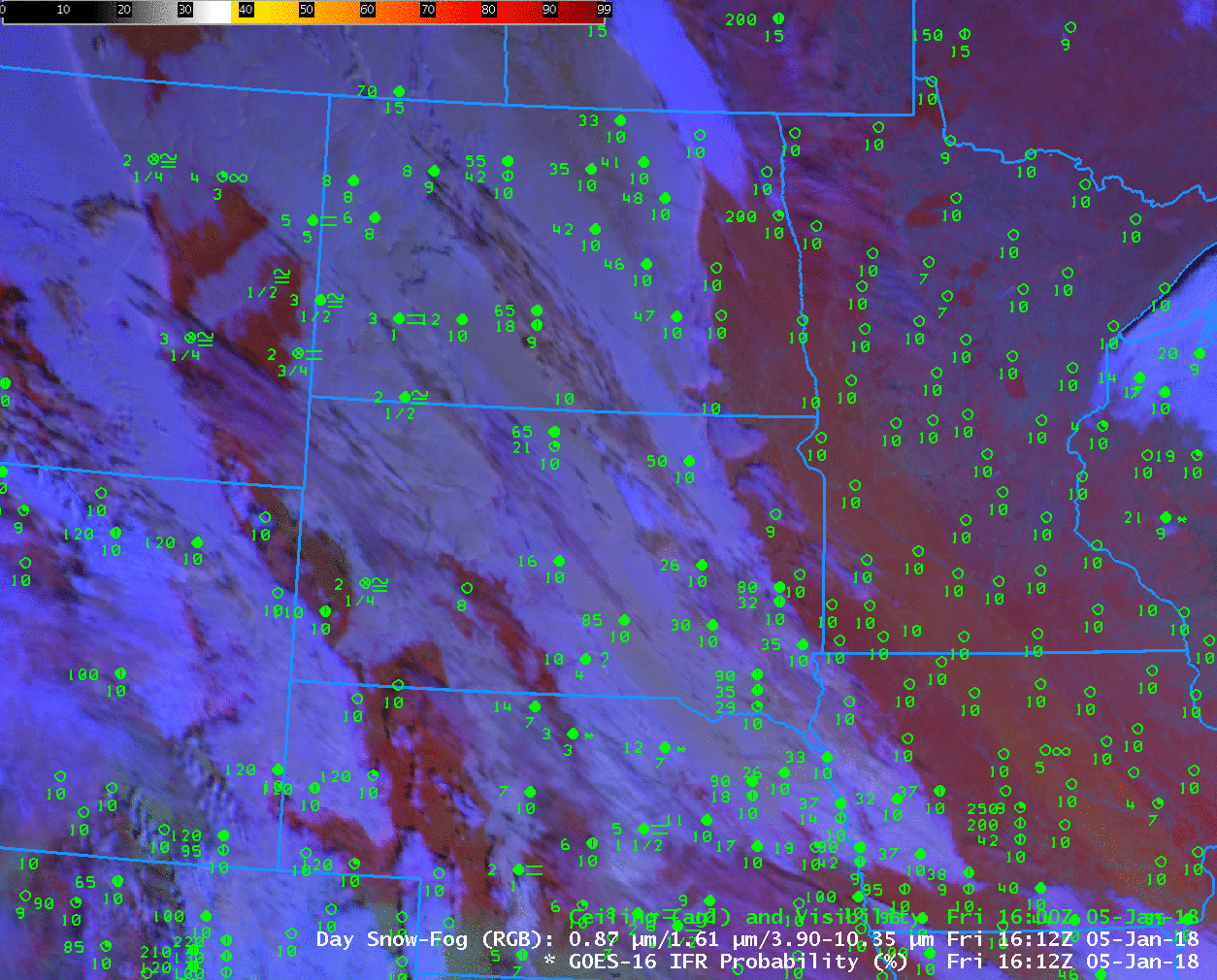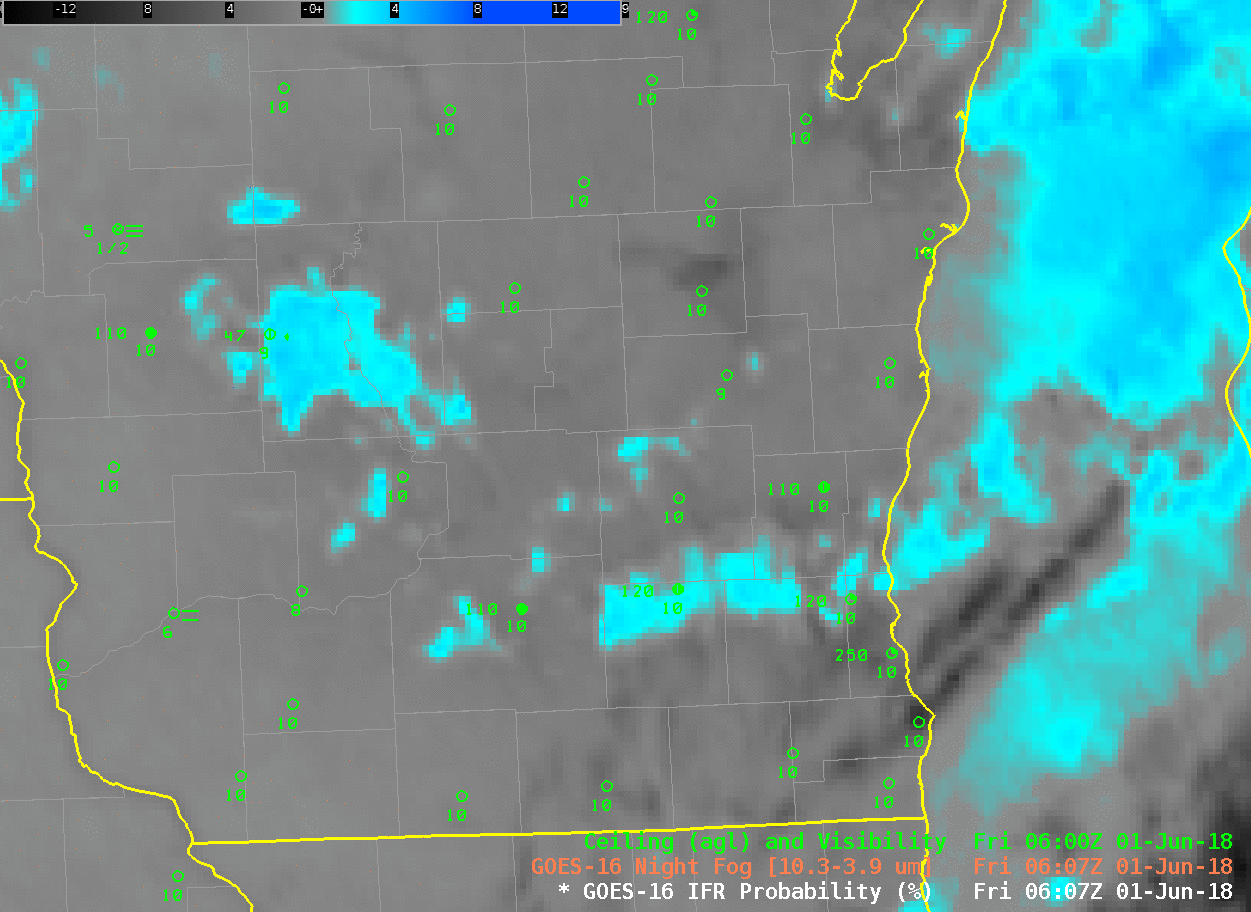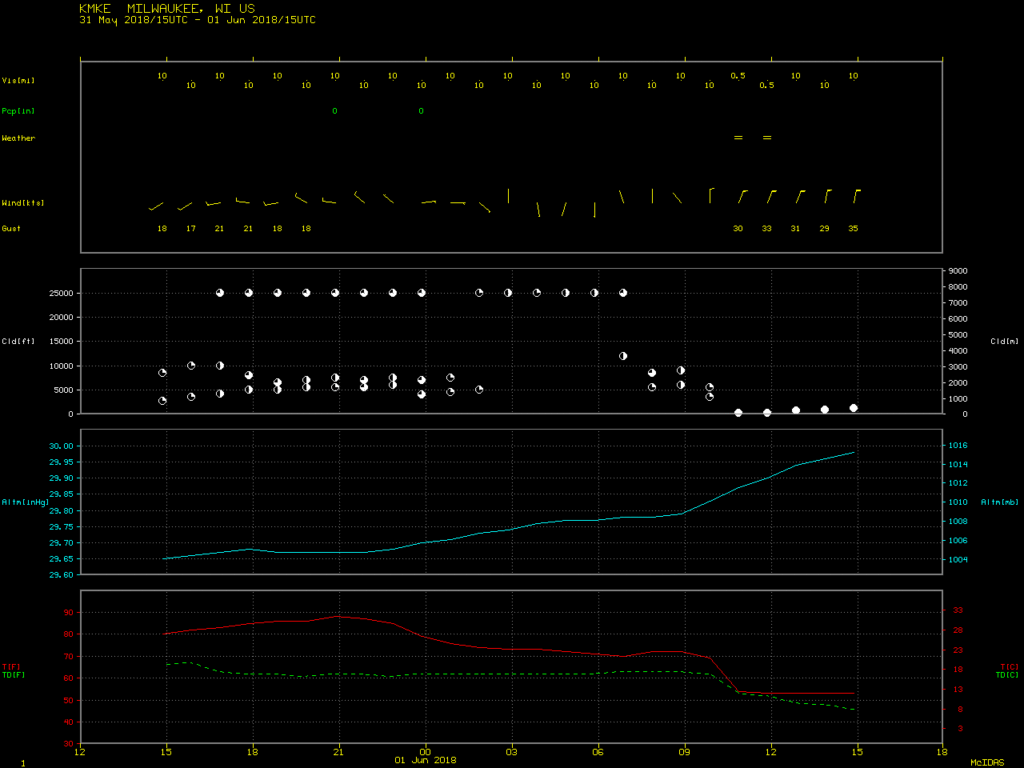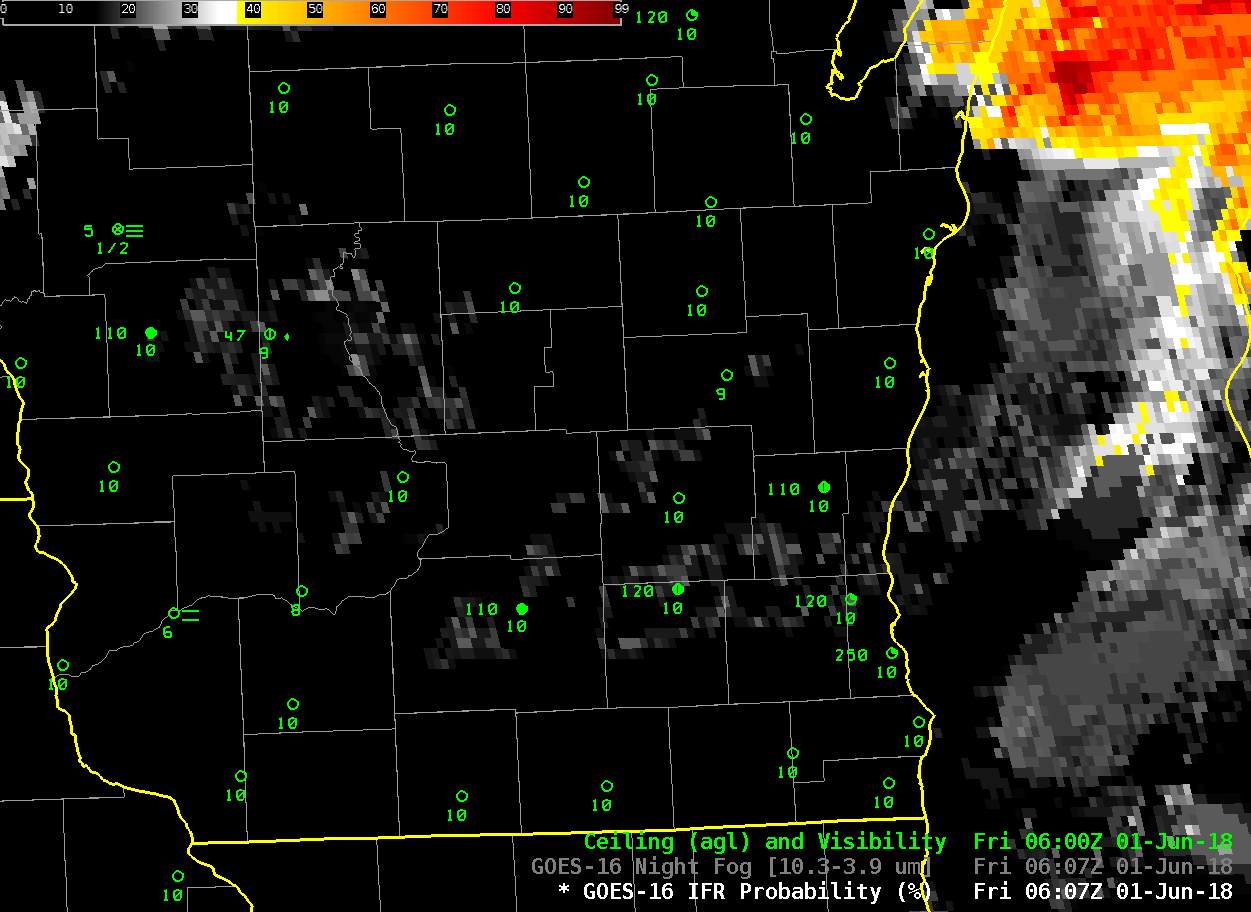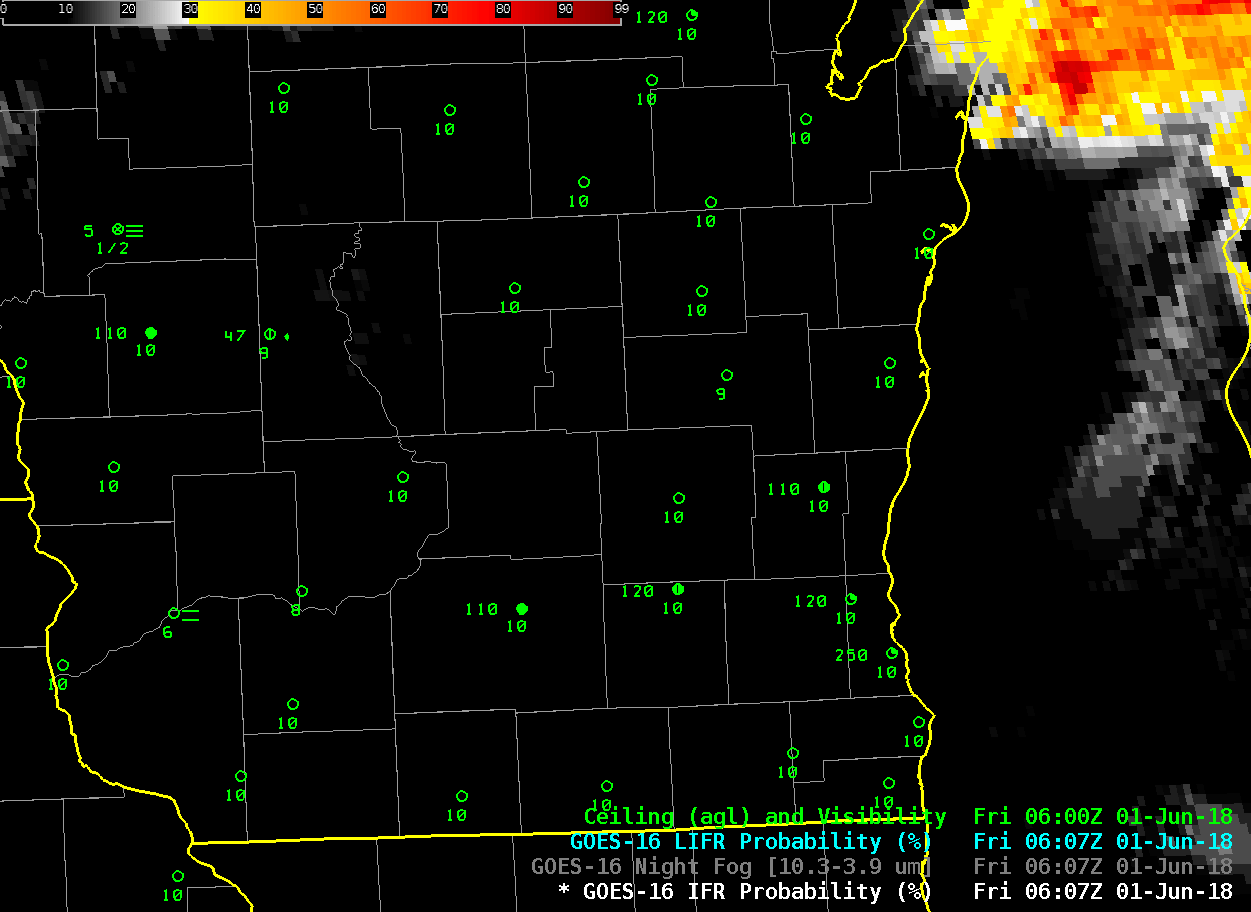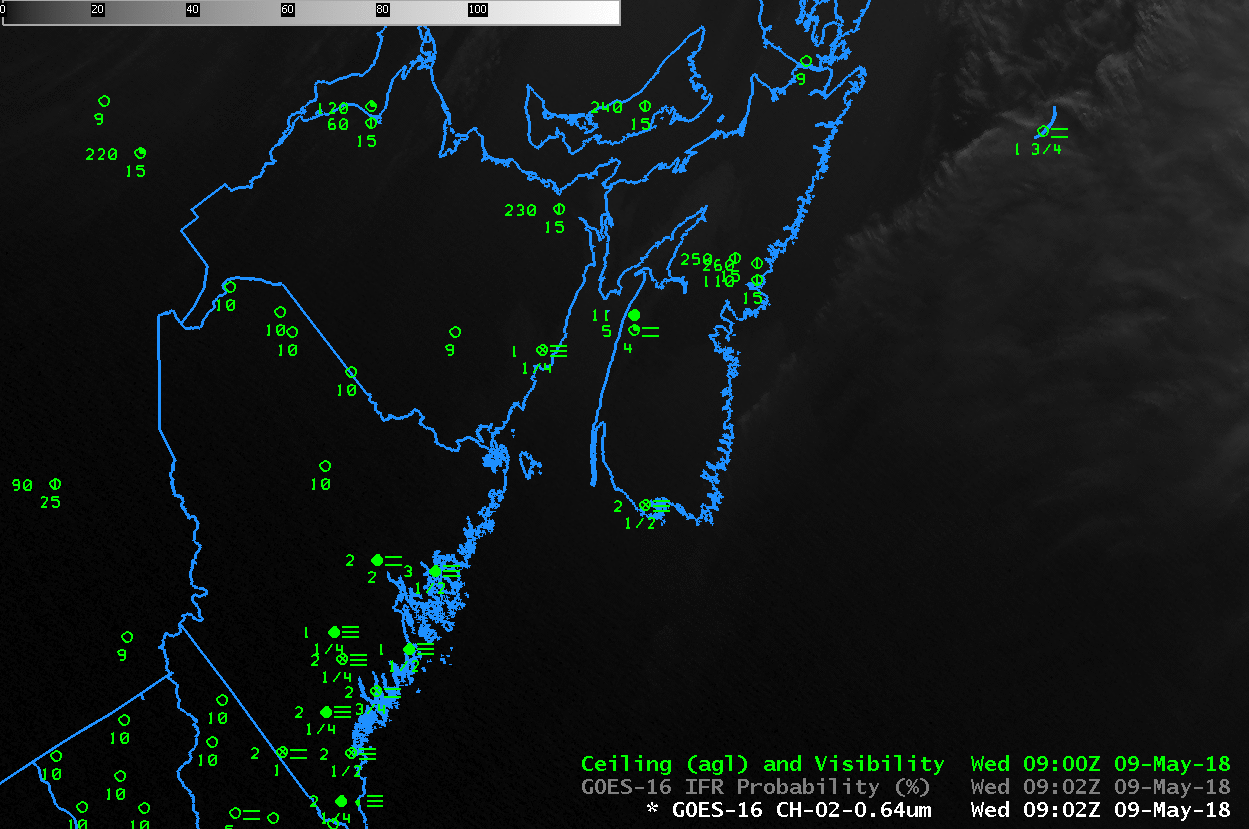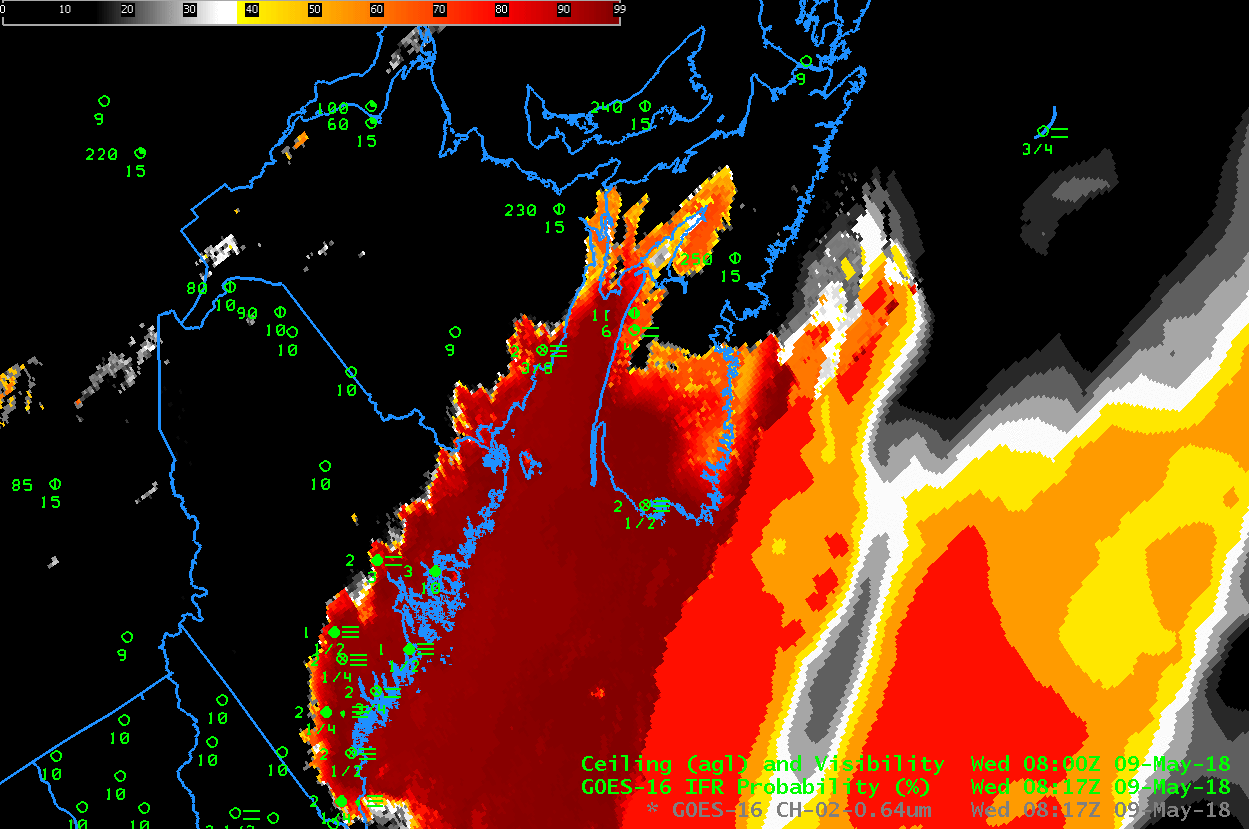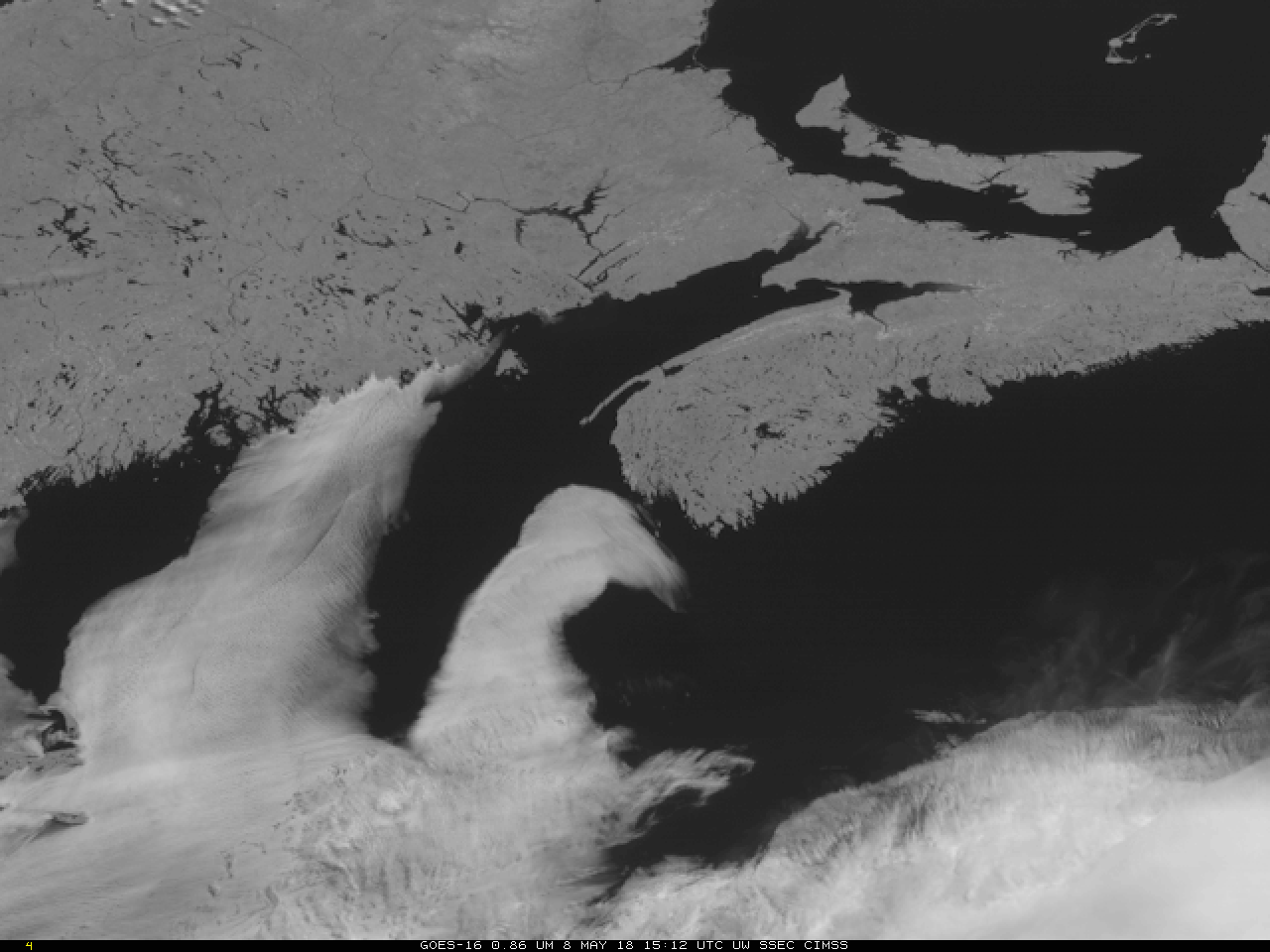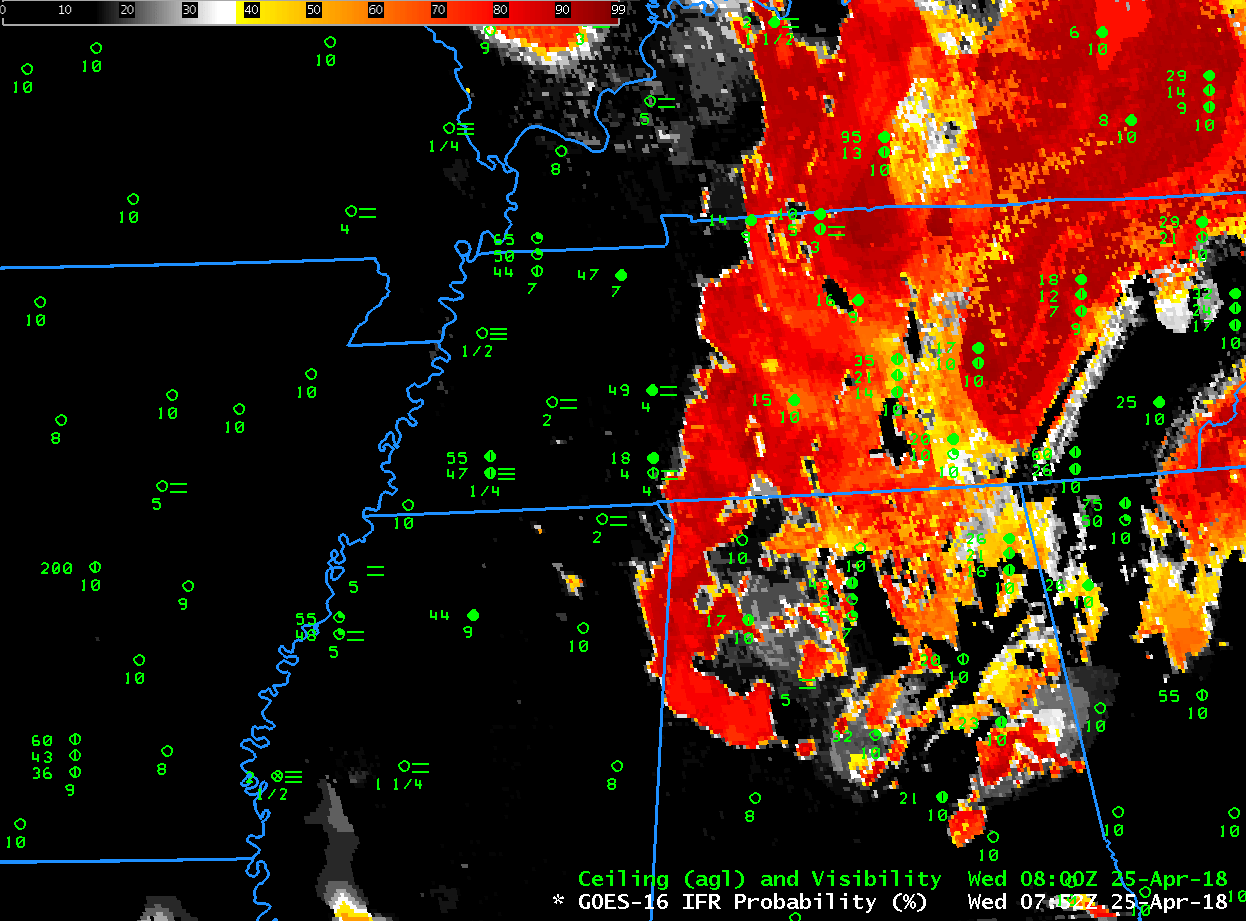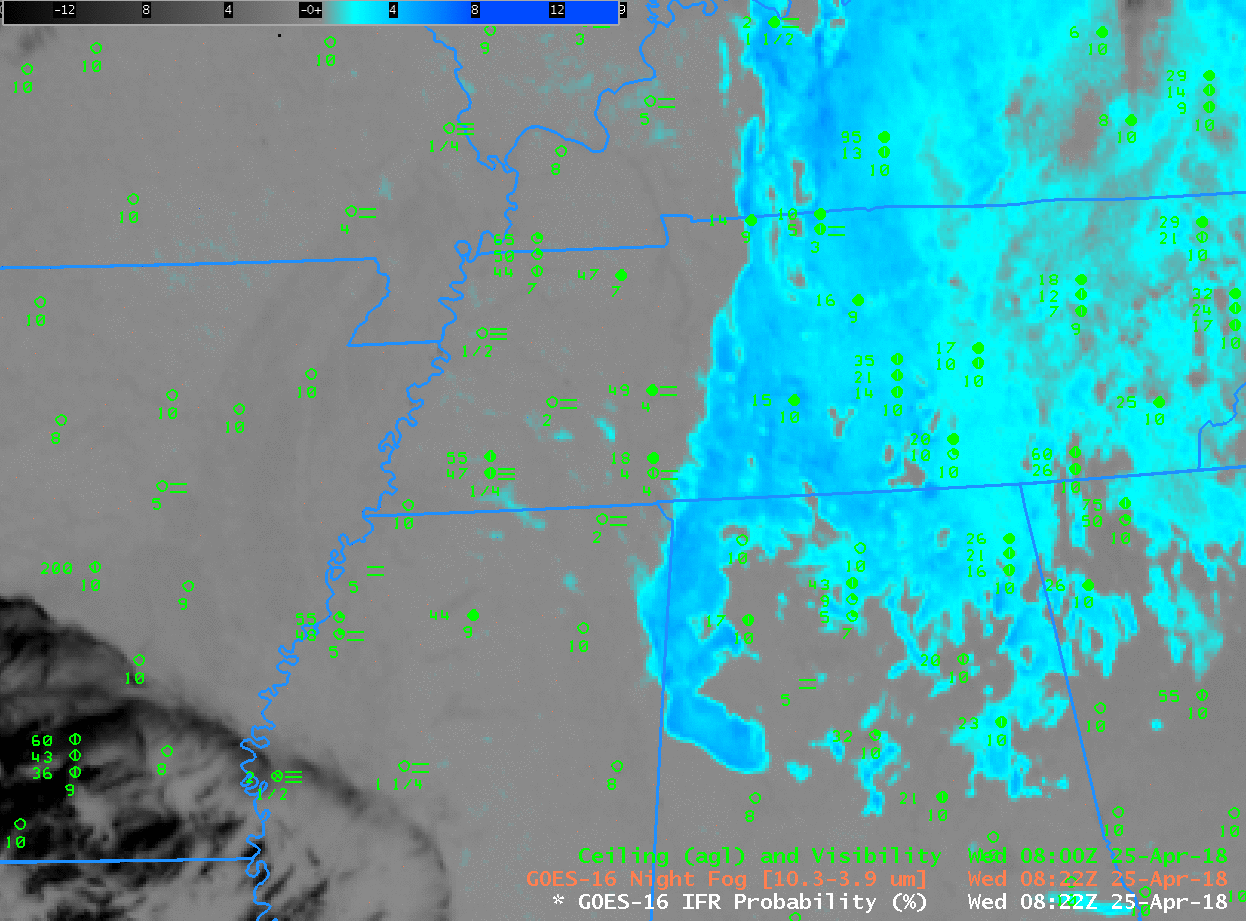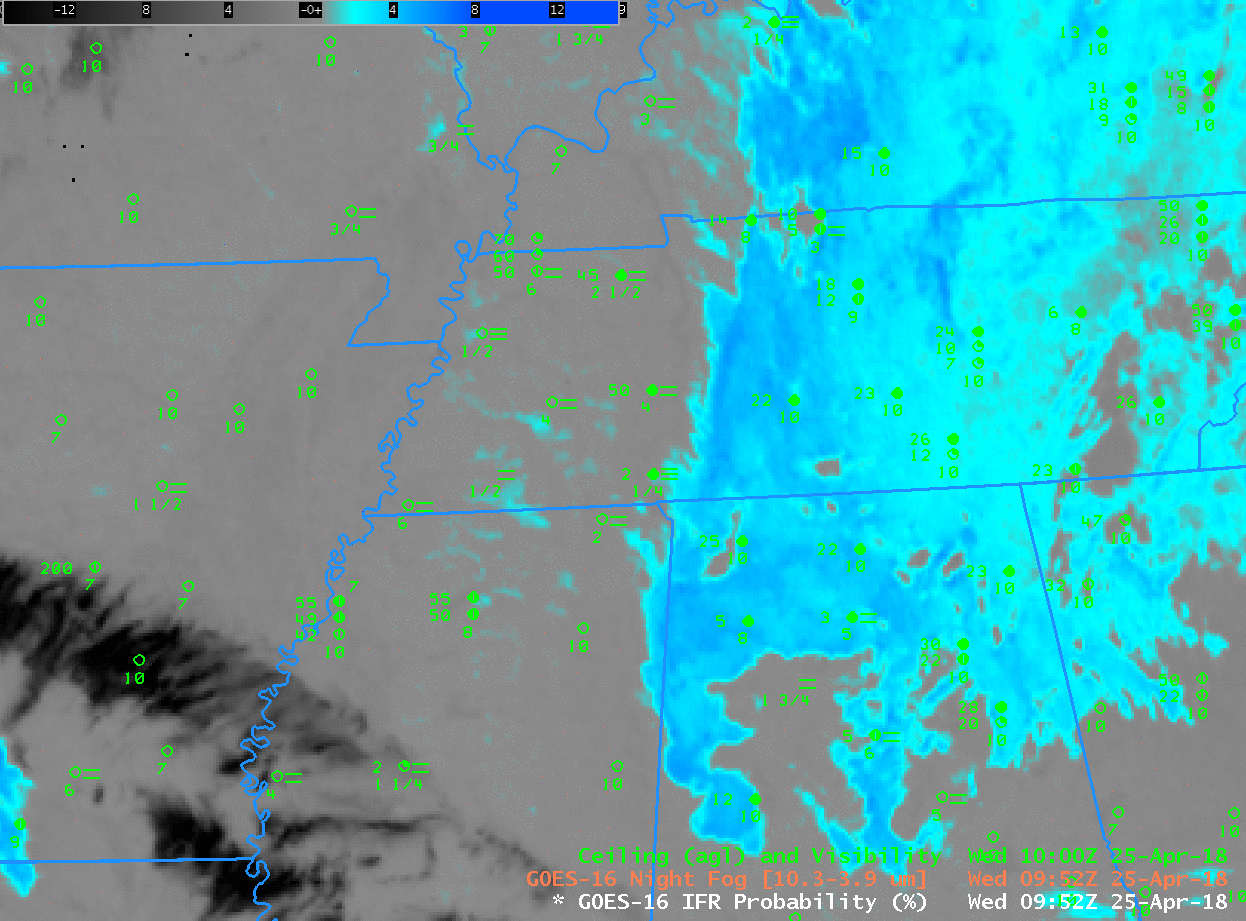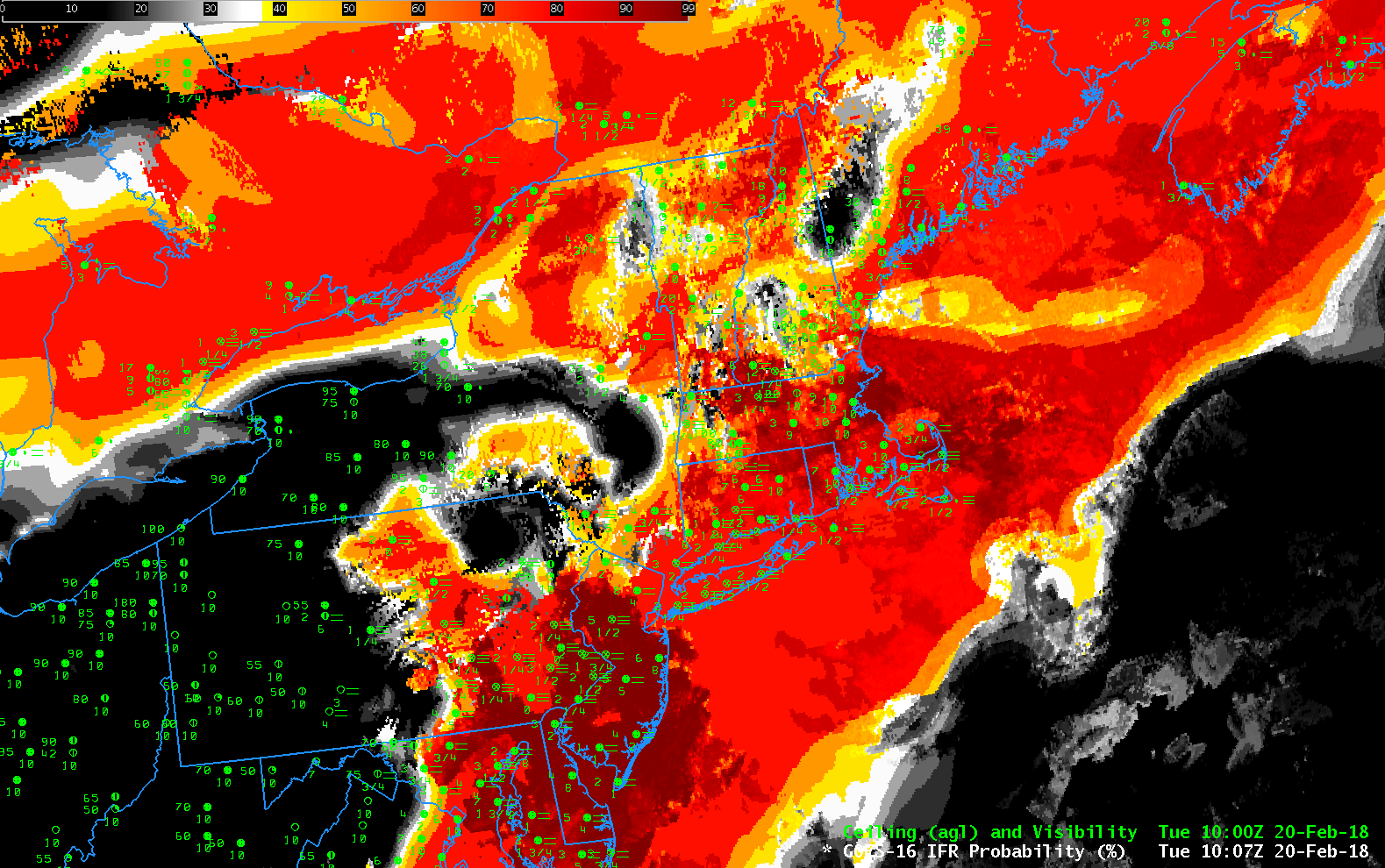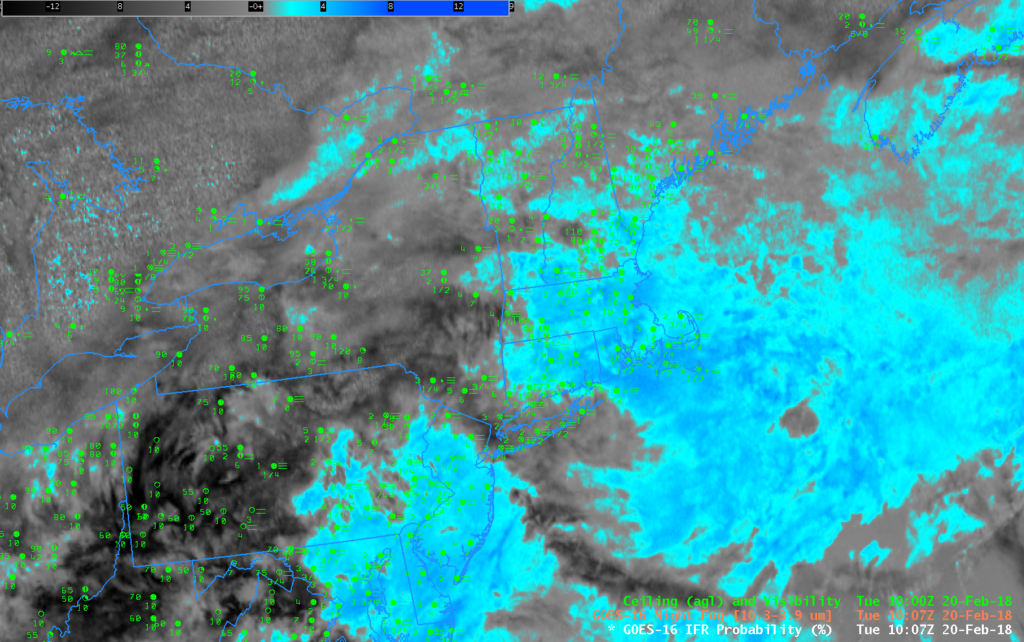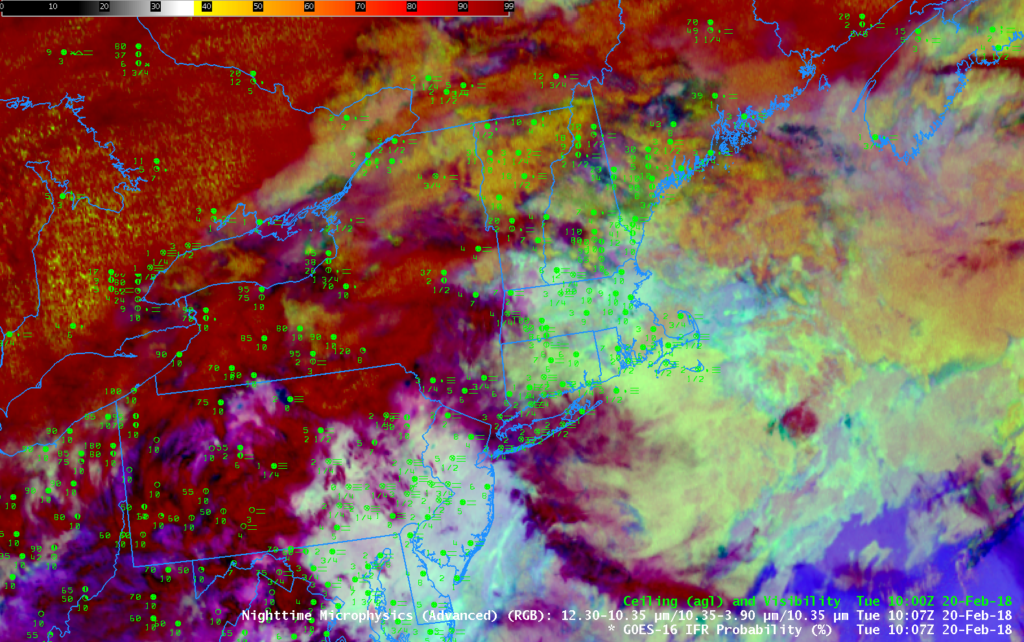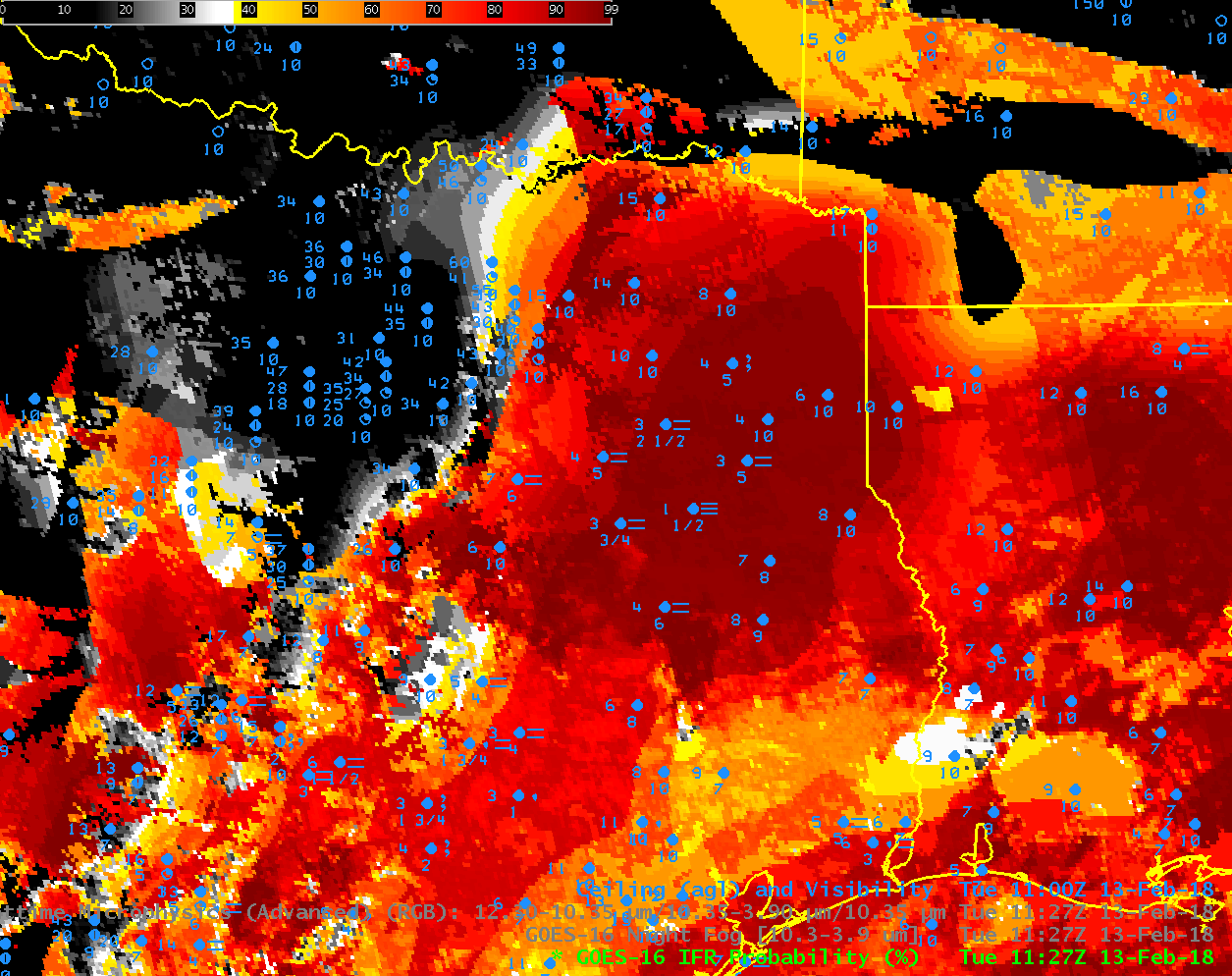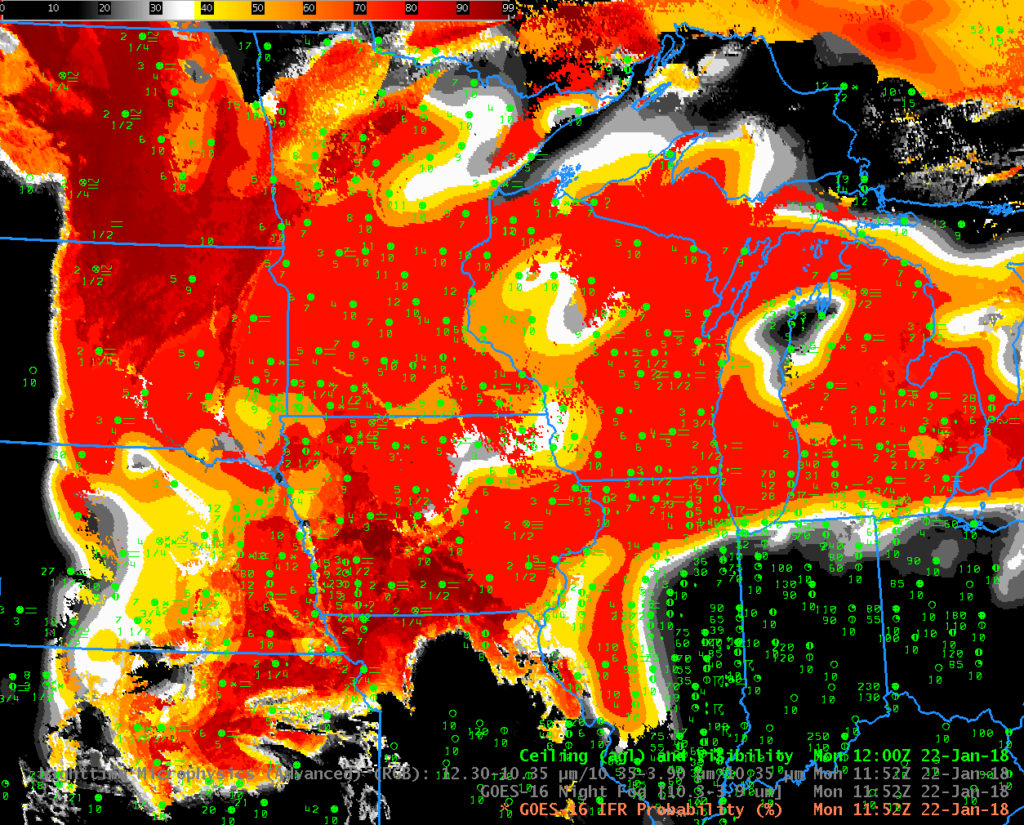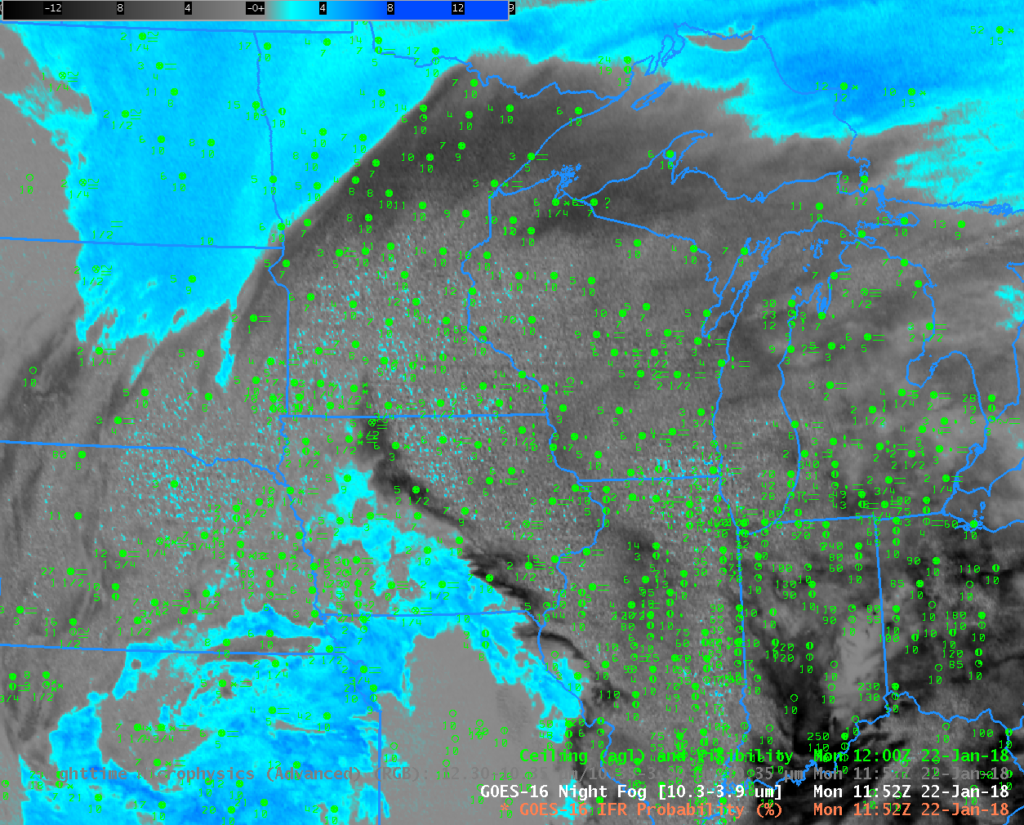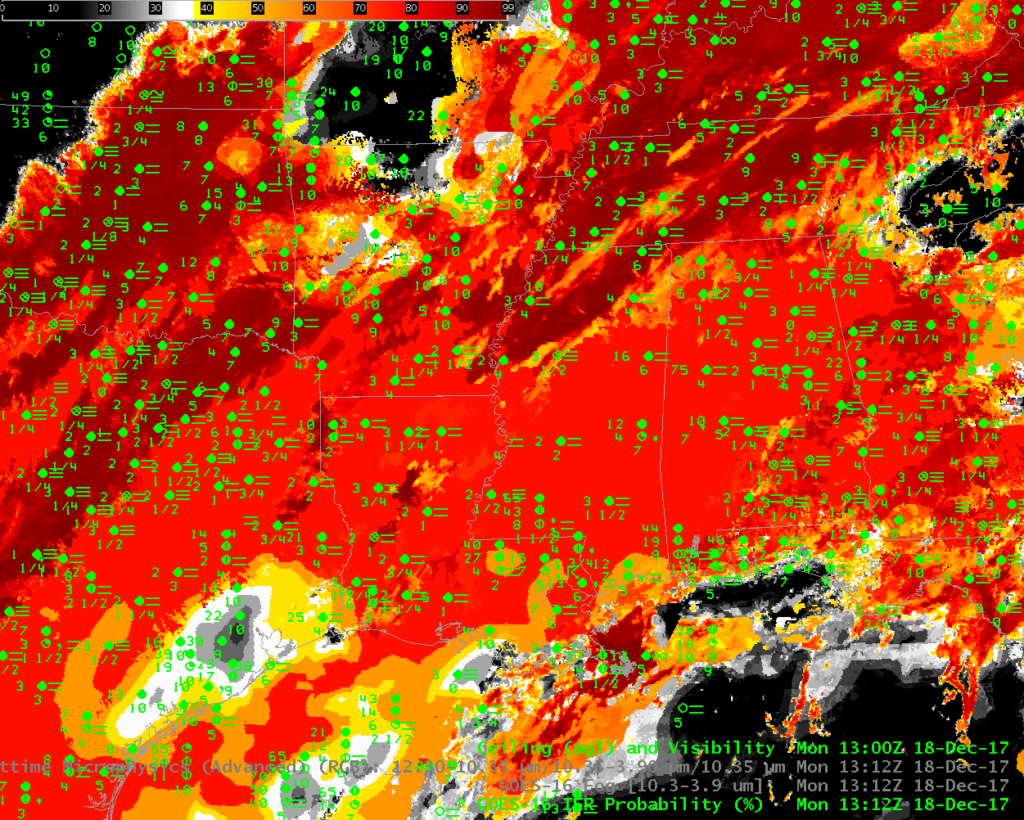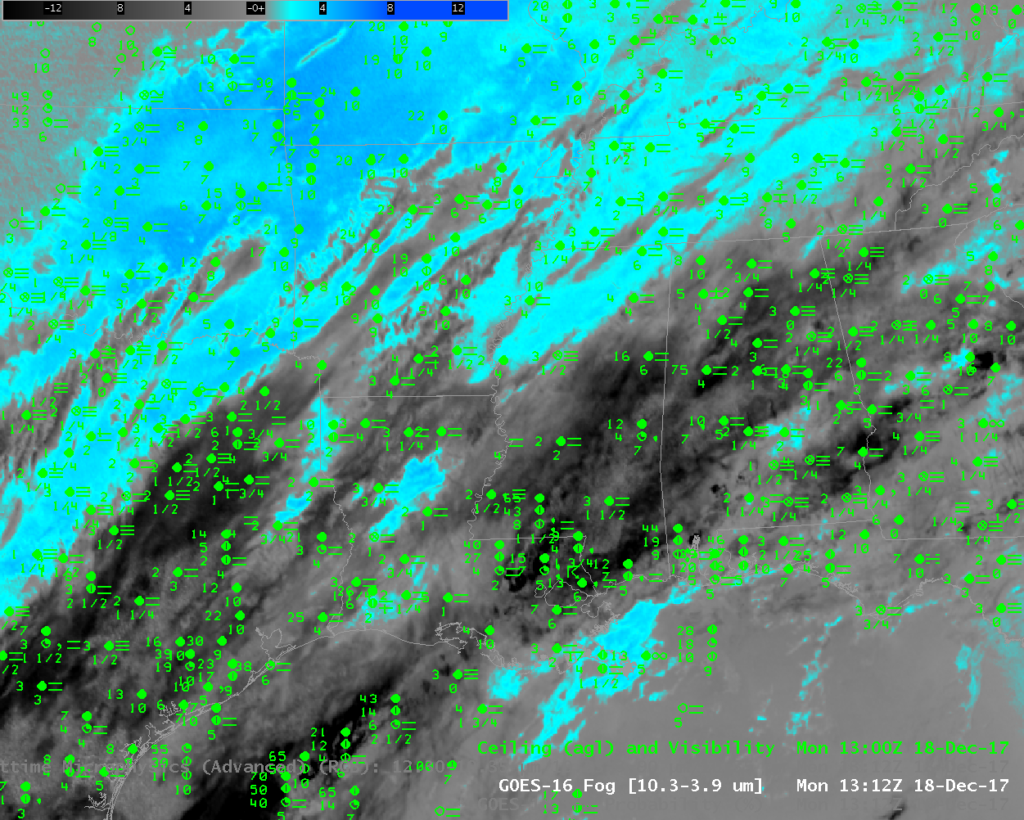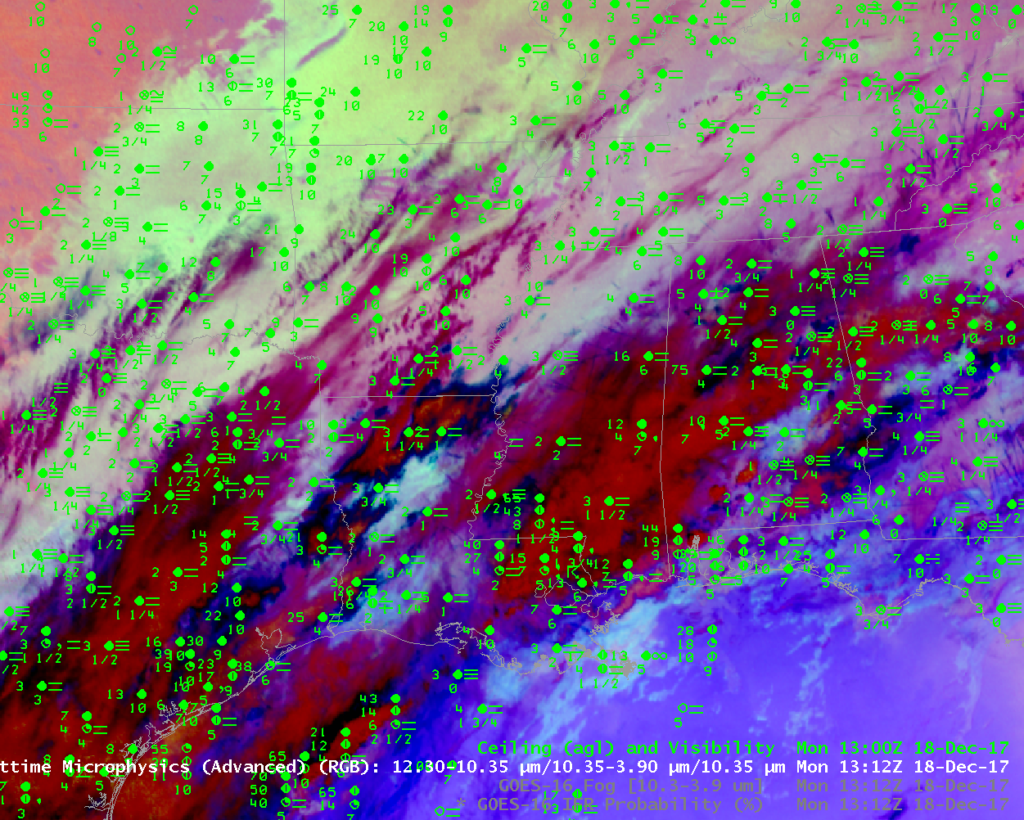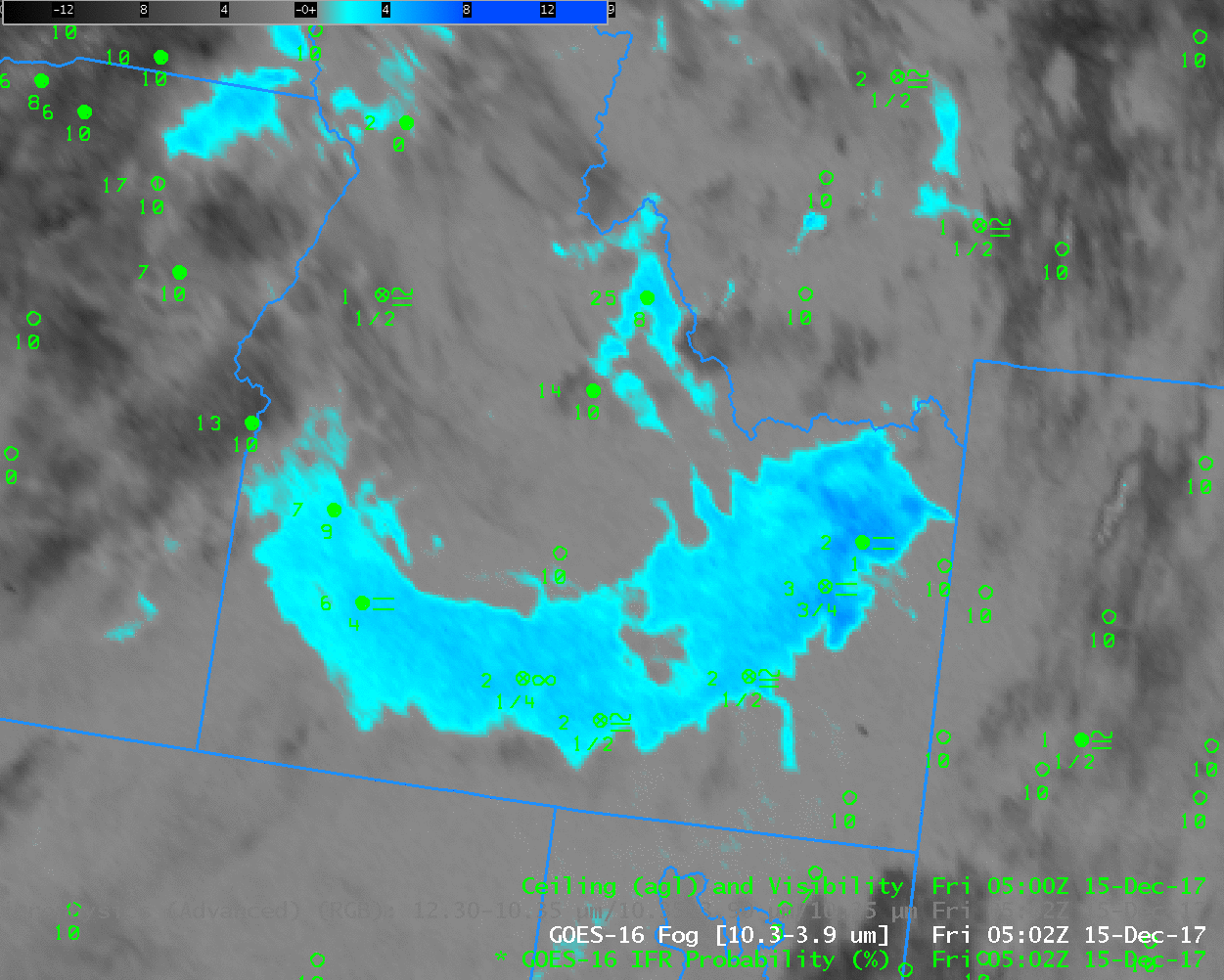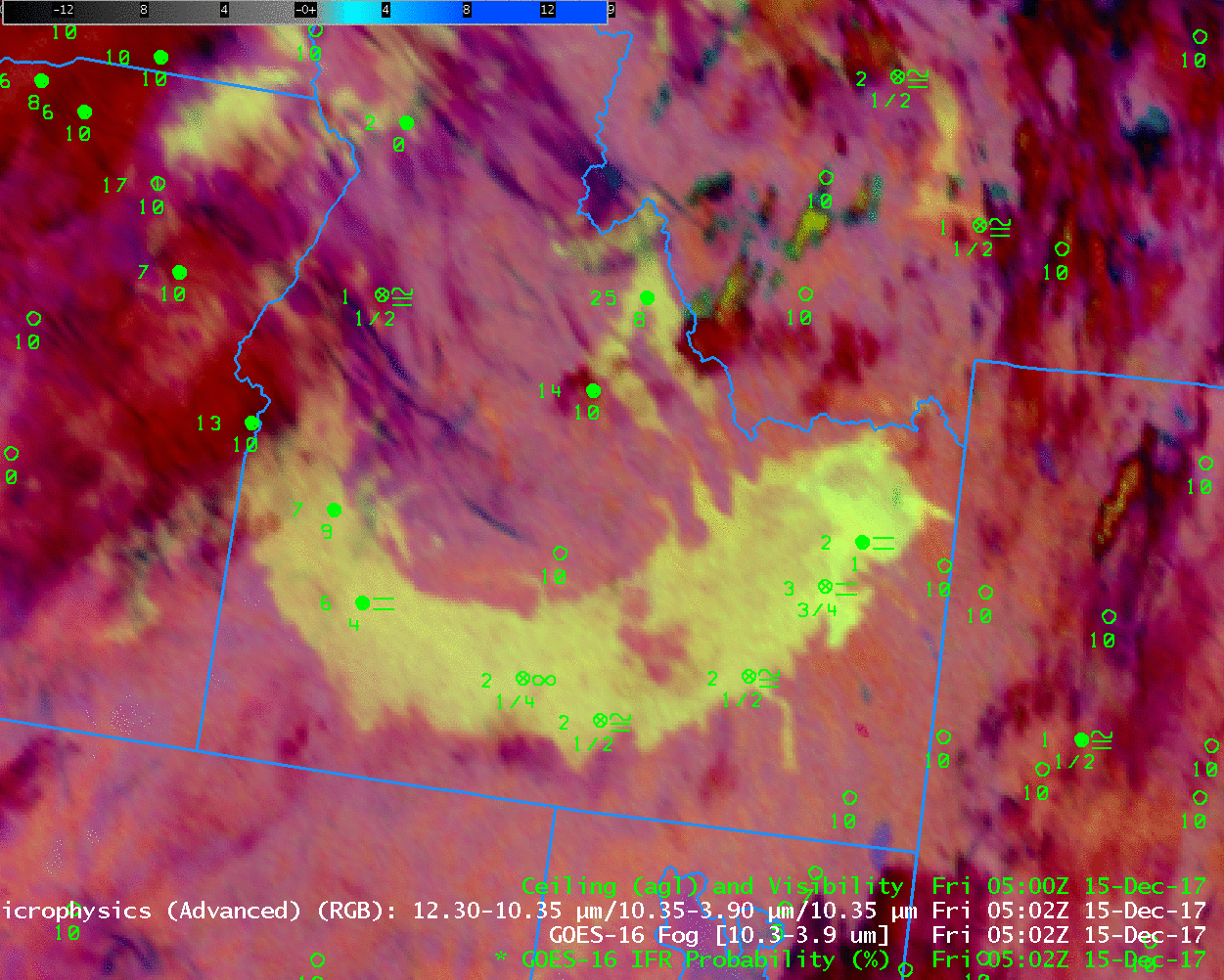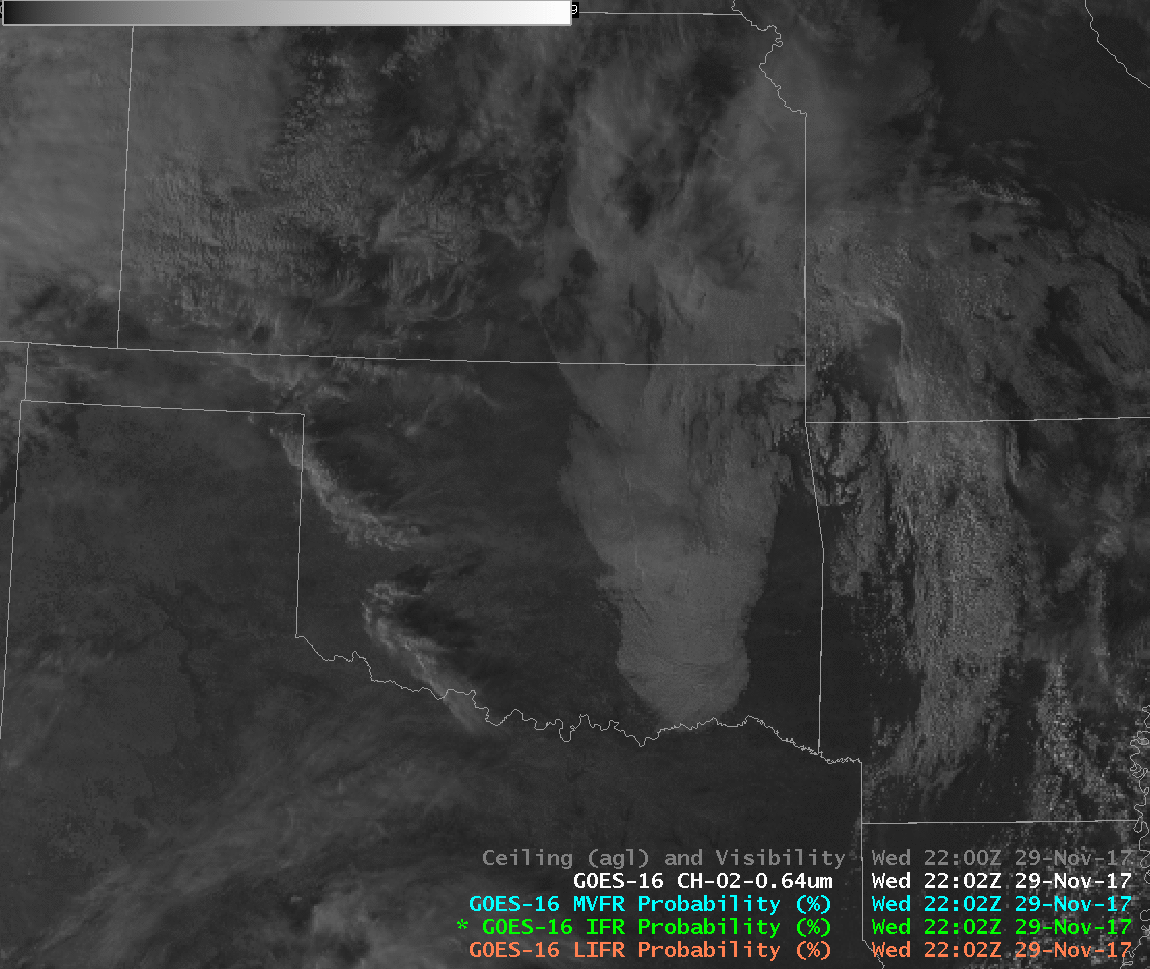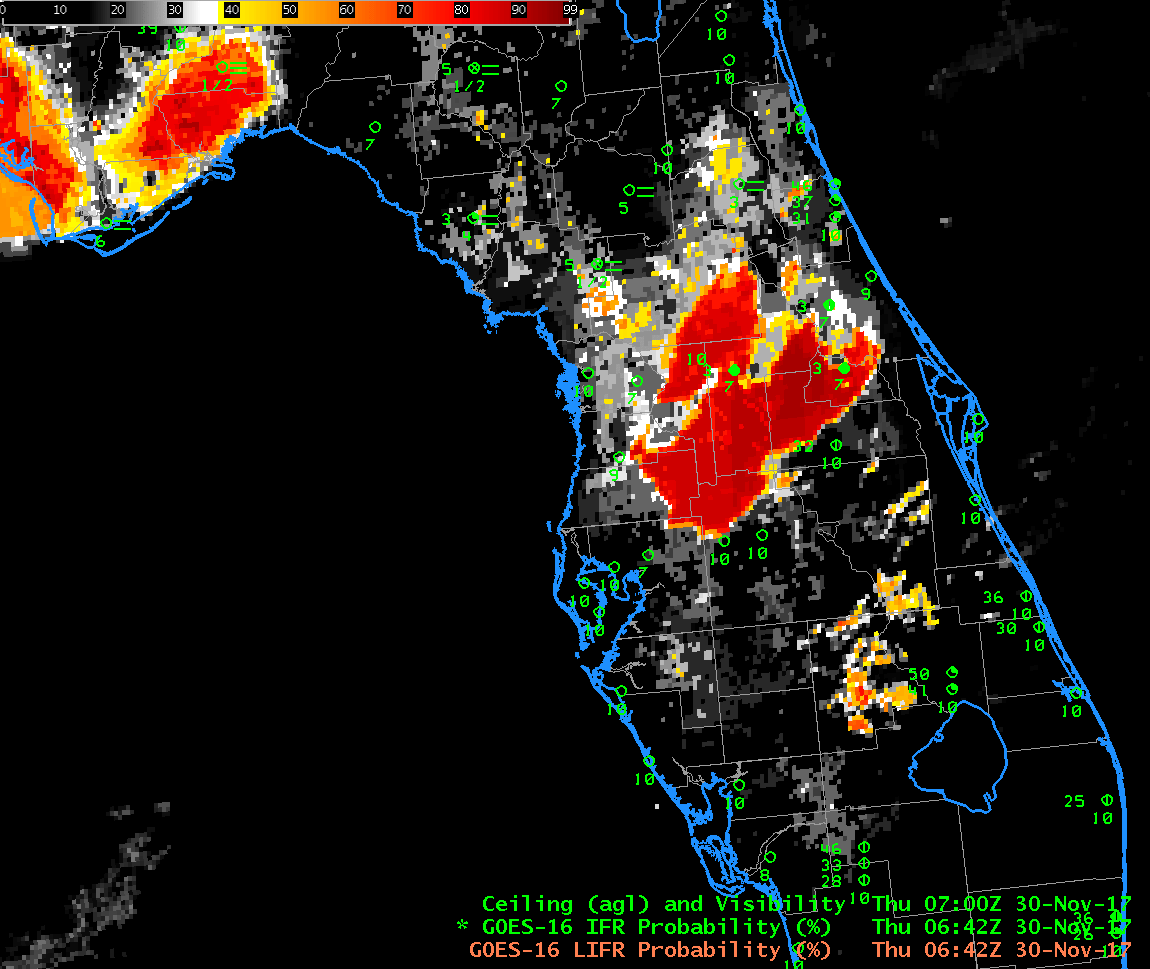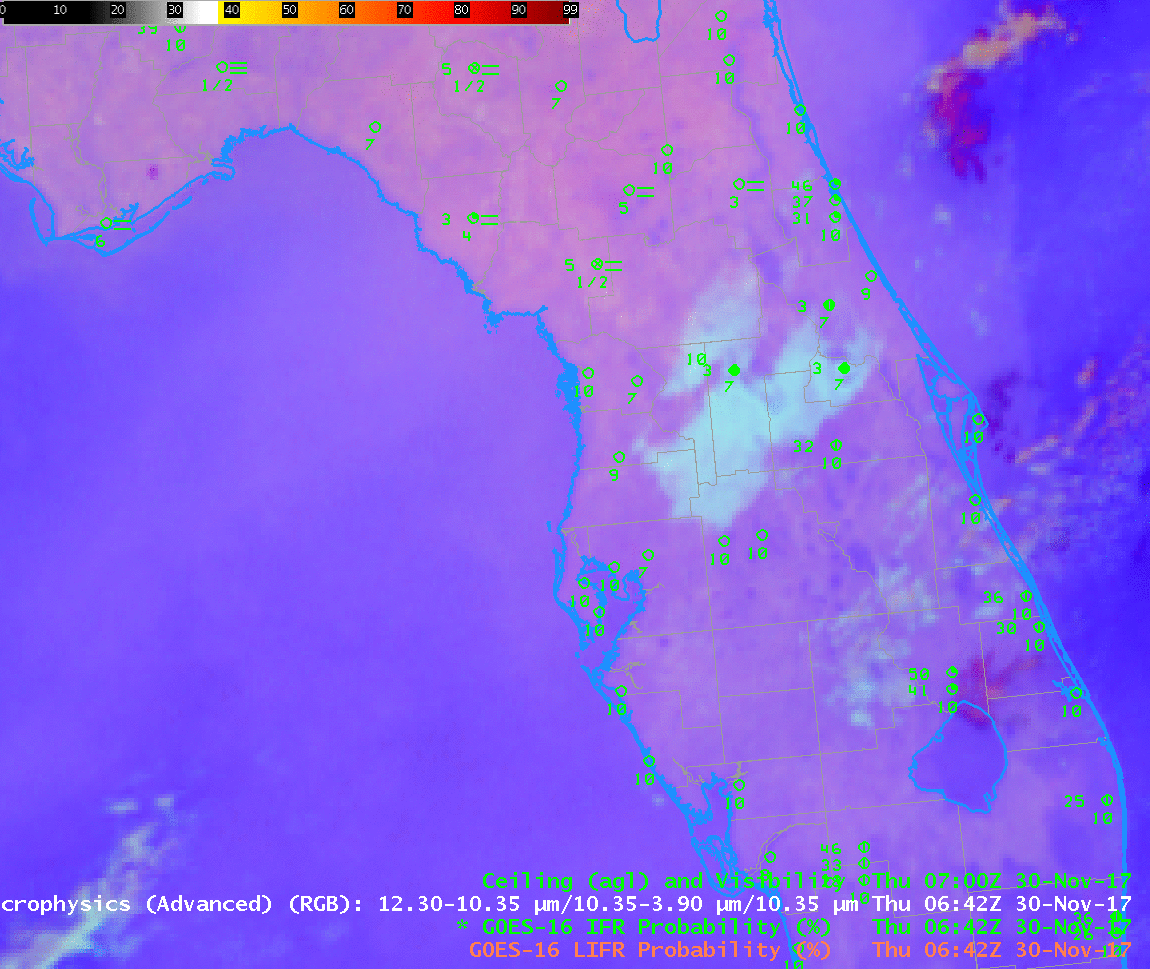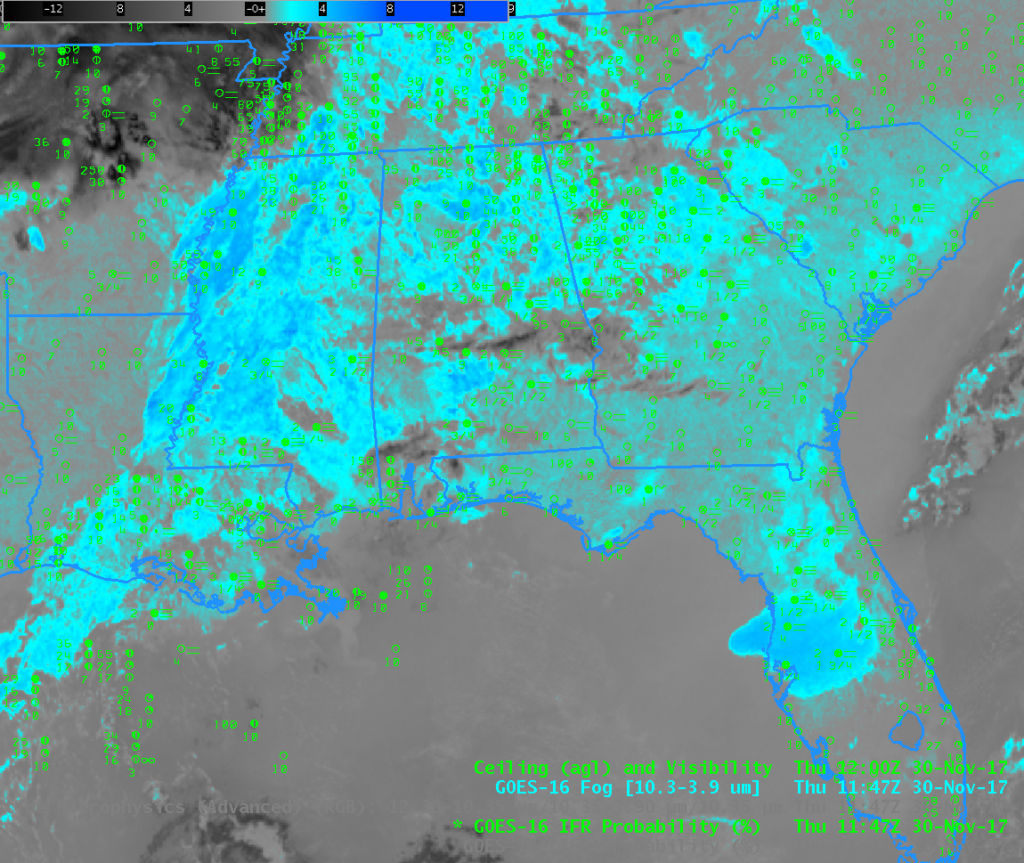Dense Fog Advisories were issued over parts of the central and northern Plains states on Friday January 5. For example, from the North Platte Office (similar warnings were issued by Billings, Rapid City and Bismark offices):
URGENT – WEATHER MESSAGE
National Weather Service North Platte NE
634 AM CST Fri Jan 5 2018
…Areas of dense fog likely this morning…
.Areas of fog reducing visibilities below one quarter mile at
times will be likely from parts of southwest into the central
Nebraska Sandhills this morning. With the fog occurring where
temperatures are below freezing, some slick spots may develop on
area roads and sidewalks as well.
NEZ025-026-037-038-059-071-051800-
/O.NEW.KLBF.FG.Y.0001.180105T1234Z-180105T1800Z/
Thomas-Blaine-Logan-Custer-Lincoln-Frontier-
Including the cities of Thedford, Halsey, Dunning, Purdum,
Brewster, Stapleton, Broken Bow, North Platte, Curtis, Eustis,
and Maywood
634 AM CST Fri Jan 5 2018
…DENSE FOG ADVISORY IN EFFECT UNTIL NOON CST TODAY…
The National Weather Service in North Platte has issued a Dense
Fog Advisory, which is in effect until noon CST today.
* Visibilities…as low as one quarter mile or less at times.
* Timing…Through the morning hours with visibilities improving
after noon CST.
* Impacts…Hazardous driving conditions due to low visibility.
Fog may freeze on area roads and walkways as well.
PRECAUTIONARY/PREPAREDNESS ACTIONS…
A Dense Fog Advisory means visibilities will frequently be
reduced to less than one quarter mile. If driving, slow down, use
your headlights, and leave plenty of distance ahead of you.
&&
$$
JWS
GOES-16 IFR Probability fields captured the development of these regions of dense fog. The animation from 0400-1200 UTC on 5 January is below. Highest values of IFR Probability are consistent in the areas where IFR Conditions are developing and where Dense Fog Advisories were issued.

GOES-16 IFR Probability, 0402 – 1207 UTC on 5 January 2018 (Click to animate)
Note that IFR Probability fields are fairly high over Iowa and the eastern Dakotas, regions where mid-level stratus was widespread but where IFR observations did not occur. On this day, Low IFR Probability fields better screened out this region of mid-level stratus. The toggle below compares IFR Probability and Low IFR Probability on 0957 UTC. The region where dense fog advisories were issued shows high values in both fields. The stratus deck over Iowa and the eastern Dakotas shows much smaller values of Low IFR Probability.
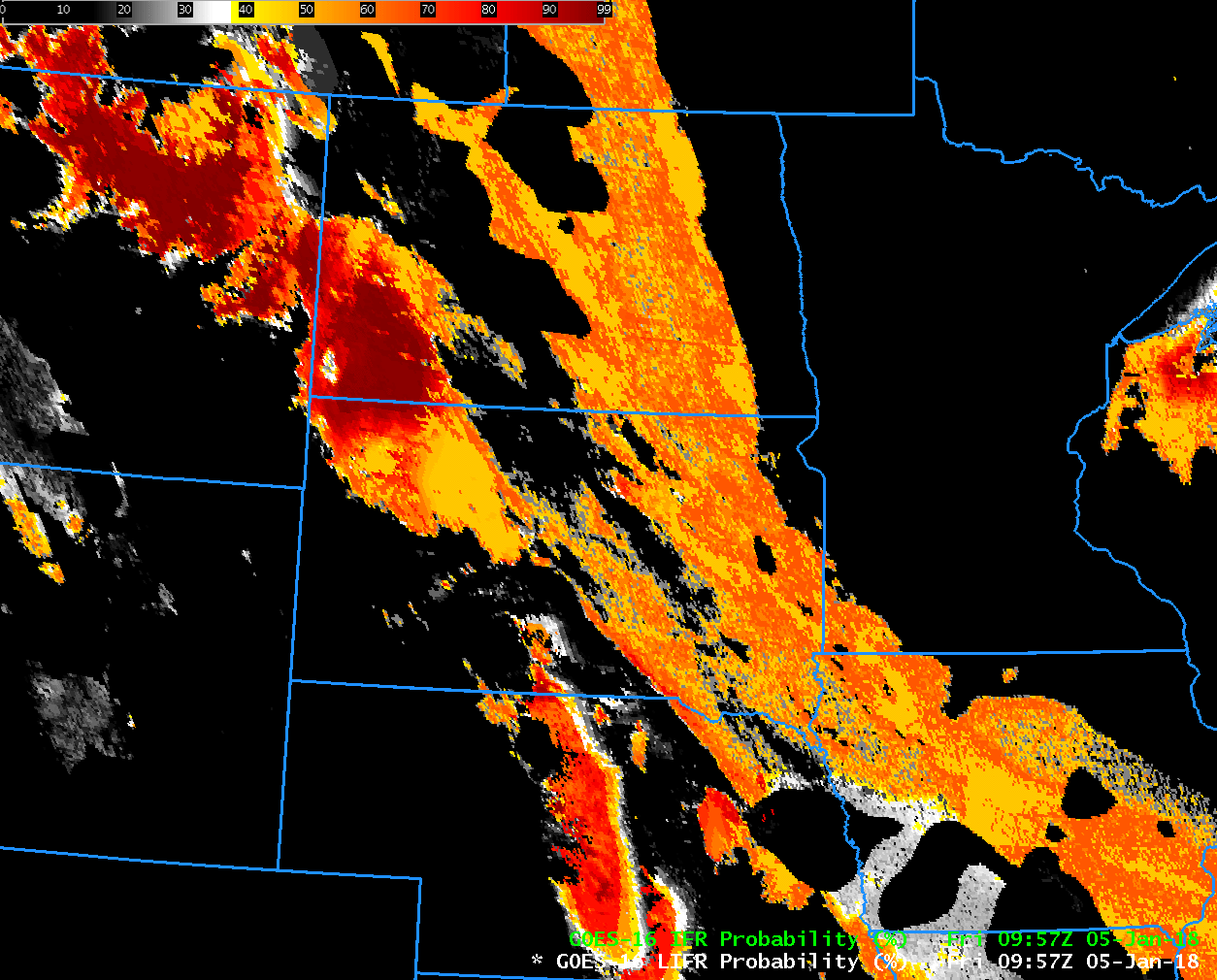
GOES-16 also has a ‘Fog Product’ brightness temperature difference (10.3 – 3.9) that has historically been used to detect low clouds. However, when cirrus clouds are present, as on 5 January, the efficacy of this product in fog detection is affected. Although fog and stratus detection is identifiable underneath the moving cirrus (the same is true in the Advanced NightTime Microphysics RGB product below), identifying the low cloud as stratus or fog from satellite data is a challenge because a consistent color married to IFR Probability does not exist.
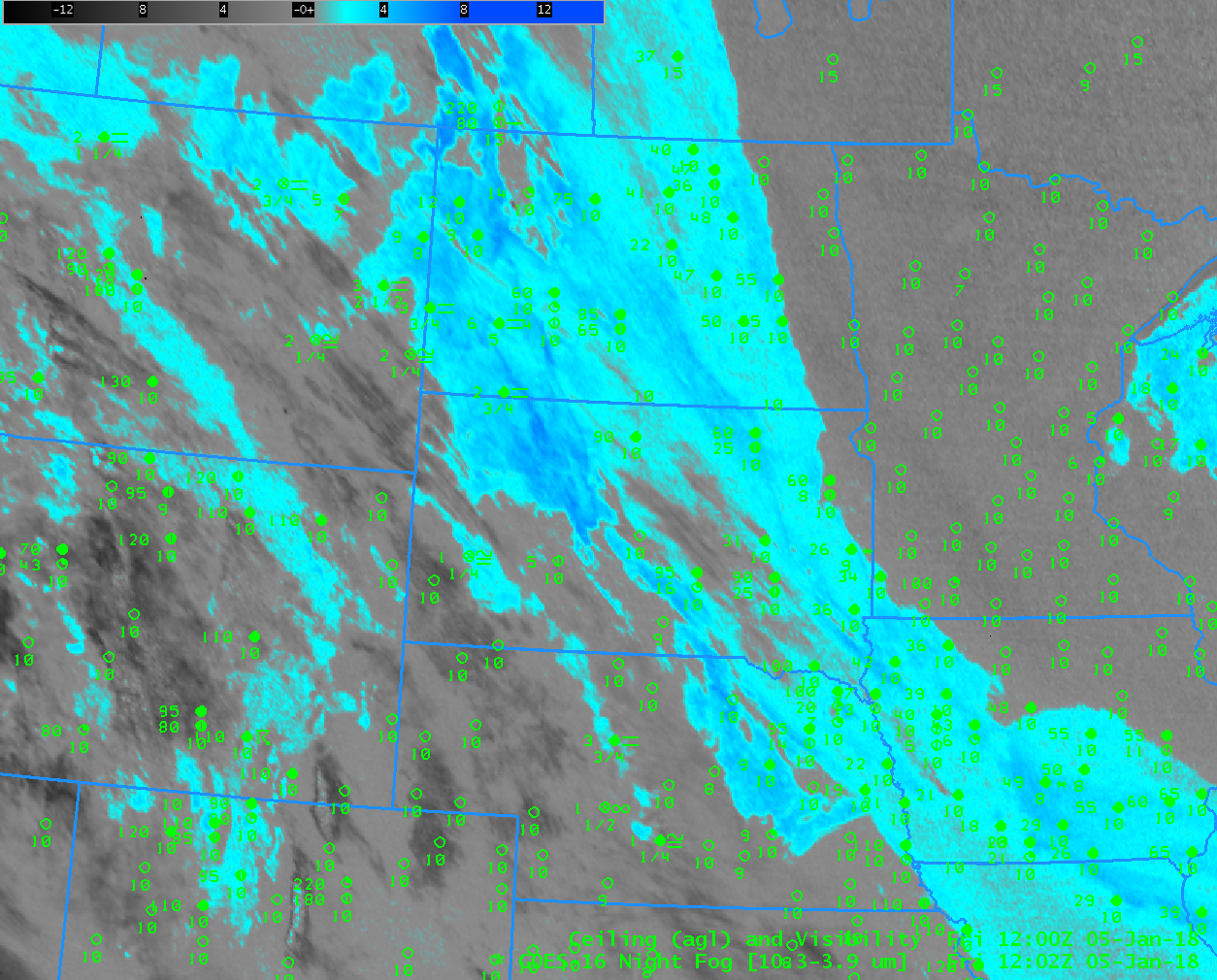
GOES-16 ‘Fog Product’ Brightness Temperature Difference (10.3 µm – 3.9 µm), 0402 – 1207 UTC, 5 January 2017 (Click to animate)
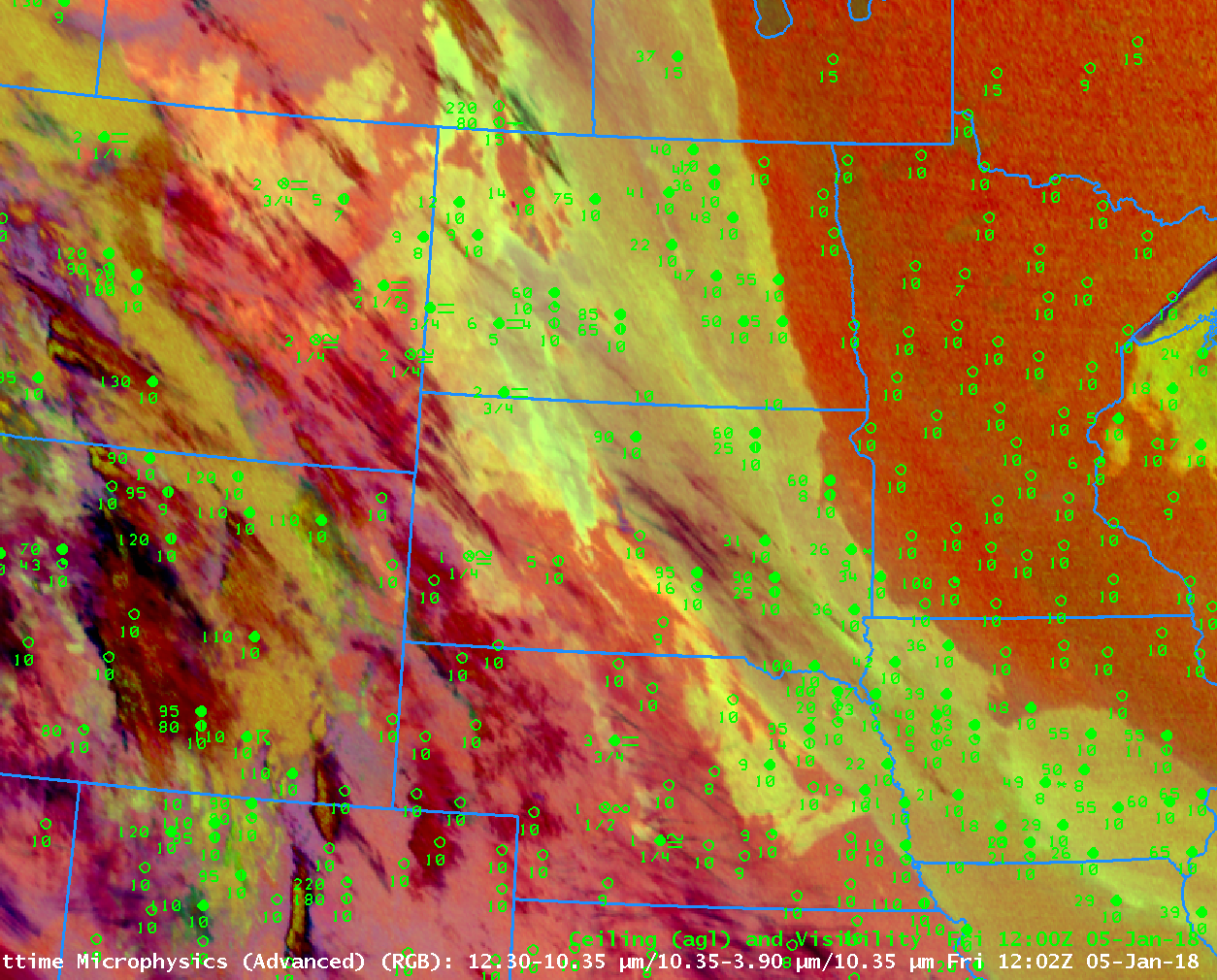
GOES-16 Advanced Nighttime Microphysics RGB, 0402-1207 UTC on 5 January 2018 (Click to animate)
GOES-16 IFR Probability fields maintain a consistent look from night to day. Both the (10.3 µm – 3.9 µm) Brightness Temperature Difference field and the Advanced Nighttime Microphysics RGB (that uses the ‘Fog Product’ BTD) will change because the increase in reflected solar radiation at 3.9 µm will change the sign of the Brightness Temperature Difference field. There is a Daytime Day/Snow/Fog RGB Product in AWIPS, and the toggle below from 1612 UTC on 5 January compares IFR Probability and the Day/Snow/Fog RGB. As with the nighttime products, the presence of high (or mid-level) clouds makes it difficult to use the RGB alone to identify regions of fog/low stratus. In contrast, the IFR Probability field continues to correctly identify where the obstructions to visibility exist.
